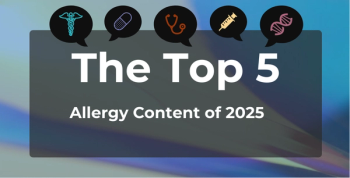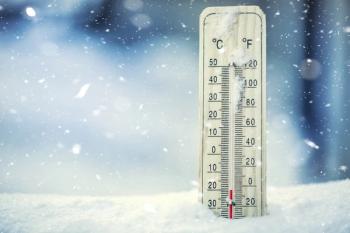
New Insights Into H5N1 Variability in Human Mutations
Key Takeaways
- Unique mutations in the H5N1 strain enhance replication in human cells and cause severe disease in mice.
- The virus has spread from birds to mammals, including dairy cows, and infected humans, with one reported death.
Mutations in one of the first human-isolated strains of H5N1 bird flu in the US were identified by the Texas Biomedical Research Institute.
The Texas Biomedical Research Institute has identified ,utations in one of the first human-isolated strains of H5N1 bird flu in the US.1 The researchers observed that the new strain, isolated from a person in Texas, possesses unique mutations that enable it to replicate more efficiently in human cells and cause severe disease in mice, compared with a strain isolated from dairy cattle, according to the study published in
Confined initially to wild birds and chickens, the H5N1 virus showed an ability to spread to mammals, including dairy cows, for the first time in the spring of 2024. By early 2025, the virus had infected herds across multiple states and dozens of people, primarily farm workers. While most human cases have so far been limited to mild symptoms and localized eye inflammation, the first US death from H5N1, linked to exposure to infected chickens, was reported in January 2025.
The lab at the institute, also called Texas Biomed, specializes in influenza viruses and has been studying H5N1 under Professor Luis Martinez-Sobrido, PhD, who has expressed concern about the mutation’s ability to adapt in humans.2
“The clock is ticking for the virus to evolve to more easily infect and potentially transmit from human to human, which would be a concern,” Martinez-Sobrido said in a
Why Is This Strain of Avian Flu Different?
Kimberly Dodd, DVM, PhD, MS, the dean of Michigan State University (MSU) College of Veterinary Medicine and former director of the MSU Veterinary Diagnostic Laboratory (MSU VDL), used her expertise in laboratory diagnostics and emerging infectious diseases to address some of the rising concerns surrounding this highly pathogenic avian influenza (HPAI).3
“This HPAI outbreak is unusual in both its scale and scope. In February, it will be three years since the first detection of H5N1 in Michigan poultry,” she wrote in a
The MSU VDL, part of the National Animal Health Laboratory Network, has been critical in responding to high-consequence animal disease outbreaks. As Michigan's only USDA-approved laboratory for testing HPAI in animals, it has conducted over 35,000 tests on more than 27,000 specimens since the outbreak began in early 2022.
Texas Biomed Is Tracking H5N1 Mutations
The team analyzed H5N1 strains isolated from a human patient and from dairy cattle.1 Findings from mouse model studies revealed that the human-adapted strain replicated more efficiently, caused more severe disease, and was found in higher concentrations in brain tissue than the bovine strain.
However, Ahmed Mostafa Elsayed, PhD, staff scientist and lead study author, emphasized that the mutations did not impact the strain’s susceptibility to FDA-approved antiviral medications. This is particularly critical since humans lack preexisting immunity to H5N1, and seasonal flu vaccines provide minimal protection, according to findings from related research.4
In the study published in mBio last month, Martinez-Sobrido and his colleagues emphasized the need for a comprehensive approach—addressing human, animal, and environmental health collectively—to combat the H5N1 HPAI. While seasonal influenza vaccines moderately increased antibody levels in some individuals through cross-reactive responses, the approach is to be followed by targeted pandemic-specific vaccines.
“Antivirals will be a key line of defense should a pandemic occur before vaccines are widely available,” Martinez-Sobrido explained. However, the threat level is not yet at that stage.
Commercially available vaccination is not recommended at this time, Robert Hopkins Jr, MD, medical director for the National Foundation for Infectious Diseases and professor of internal medicine and pediatrics at the University of Arkansas for Medical Sciences, explained in an interview with The American Journal of Managed Care®. While some nations are considering vaccinating individuals at high risk who work with animal herds, there’s not been an international or US recommendation yet.
“The World Health Organization and the CDC guidance currently doesn't support vaccination at this point, and the number of human cases has been small. There's no person-to-person transmission yet; hopefully, there won't be,” Hopkins said. “The World Health Organization and CDC have identified some seed strains of virus which have been shared with industry partners so that vaccine development can be accelerated if the situation changes.”
The Texas Biomed researchers are now investigating the individual mutations in the human strain to identify those responsible for its increased virulence.2 Future work aims to understand H5N1’s ability to infect a wide range of mammals, why infections in cows cause mild illness compared with severe outcomes in cats, and why bovine-derived infections in humans appear less harmful than those from chickens.
“A key priority will be to eradicate bird flu from dairy cows to minimize risk of mutations and transmission to people and other species,” Elsayed stated. “Steps that can be taken now include thorough decontamination of milking equipment and more stringent quarantine requirements, which will help eliminate the virus more quickly in cows.”
References
1. Mostafa A, Barre RS, Allué-Guardia A, et al. Replication kinetics, pathogenicity and virus-induced cellular responses of cattle-origin influenza A(H5N1) isolates from Texas, United States. Emerg Microbes Infect. 2025;14(1):2447614. doi:10.1080/22221751.2024.2447614
2. Bird flu is mutating, but antivirals still work. News release. Texas Biomedical Research Institute. January 15, 2025. Accessed January 15, 2025.
3. MSU expert: update on highly pathogenic avian influenza. News release. Michigan State University. January 17, 2025. Accessed January 17, 2025.
4. Sanz-Muñoz I, Sánchez-Martínez J, Rodríguez-Crespo C, et al. Are we serologically prepared against an avian influenza pandemic and could seasonal flu vaccines help us? mBio. Published online December 31, 2024. doi:10.1128/mbio.03721-24
Newsletter
Stay ahead of policy, cost, and value—subscribe to AJMC for expert insights at the intersection of clinical care and health economics.







































